Main menu
Common skin conditions

NEWS
Join DermNet PRO
Read more
Quick links
Created 2008.
Infantile seborrhoeic dermatitis
Seborrhoeic dermatitis may affect infants, presenting within the first few months postpartum as cradle cap or napkin dermatitis. It sometimes spreads widely via the flexures. It clears by about twelve months of age.
Seborrhoeic dermatitis appears to be an inflammatory response to malassezia yeasts, which proliferate in oily skin (seborrhoea). In infants it is supposed that maternal androgens are responsible.
Characteristically, the scale is yellowish and greasy or white and bran-like (pityriasiform) associated with variable nummular or annular pale pink to bright red patches. Itching tends to be absent or mild.
Infantile seborrhoeic dermatitis Infantile seborrhoeic dermatitis Infantile seborrhoeic dermatitis Infantile seborrhoeic dermatitis Infantile seborrhoeic dermatitis Infantile seborrhoeic dermatitis 

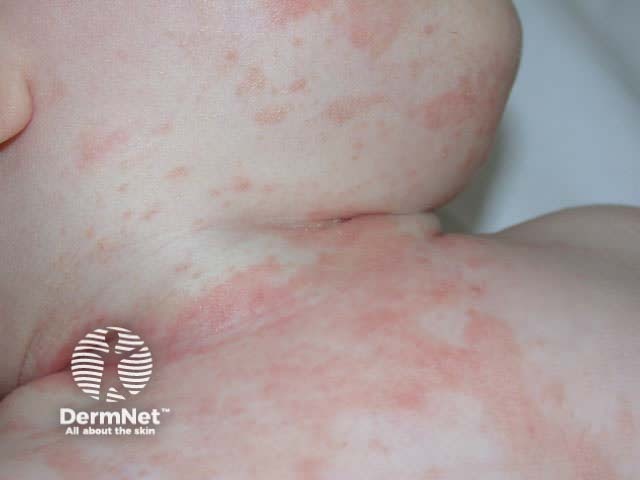
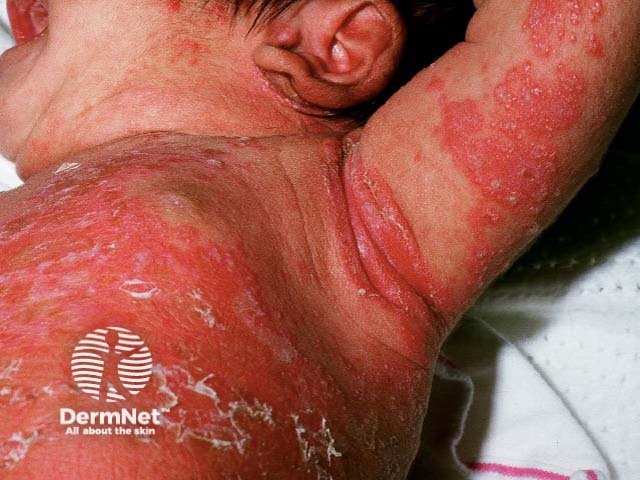
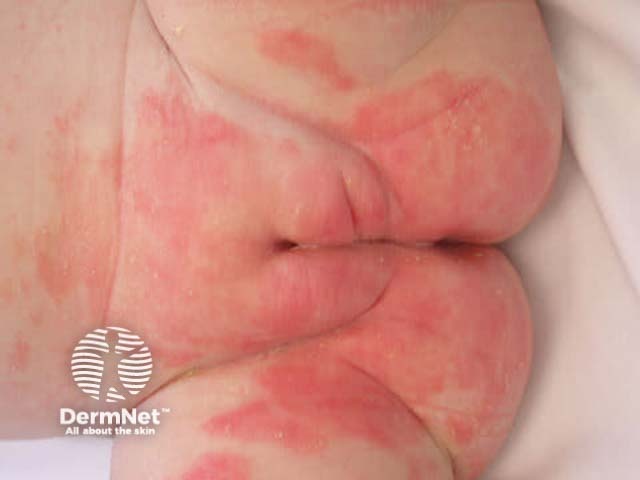
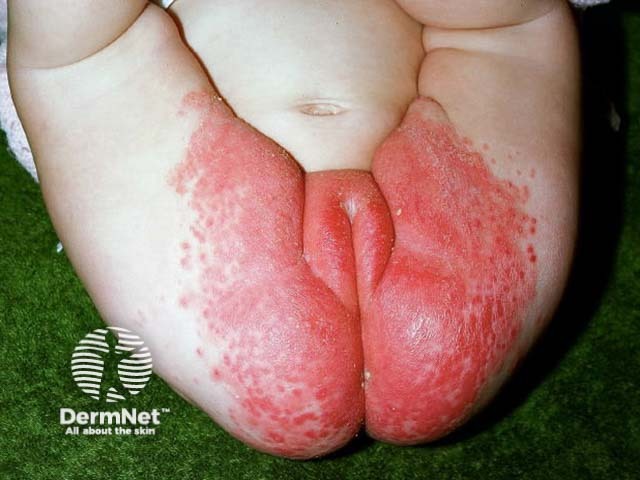
Adult-pattern seborrhoeic dermatitis
Seborrhoeic dermatitis is a common chronic erythematous scaly dermatosis that may arise in adolescents. It is more prevalent in middle-aged adults.
Seborrhoeic dermatitis affects the following sites:
As in infants, seborrhoeic dermatitis appears to be an inflammatory response to malassezia. It sometimes progresses to psoriasis; unusually extensive seborrhoeic dermatitis is sometimes called ‘sebopsoriasis’.
Characteristically, the scale is yellowish and greasy or white and bran-like (pityriasiform) associated with variable nummular or annular pale or salmon pink to bright red patches. Itching tends to be absent or mild.
Excoriation may lead to secondary infection, which is occasionally chronic and difficult to eradicate.
Seborrhoeic blepharitis and dermatitis on the cheeks Seborrhoeic dermatitis Seborrhoeic dermatitis Seborrhoeic dermatitis Confluent erythema and scale due to scalp seborrhoeic dermatitis Flexural seborrhoeic dermatitis in the axilla 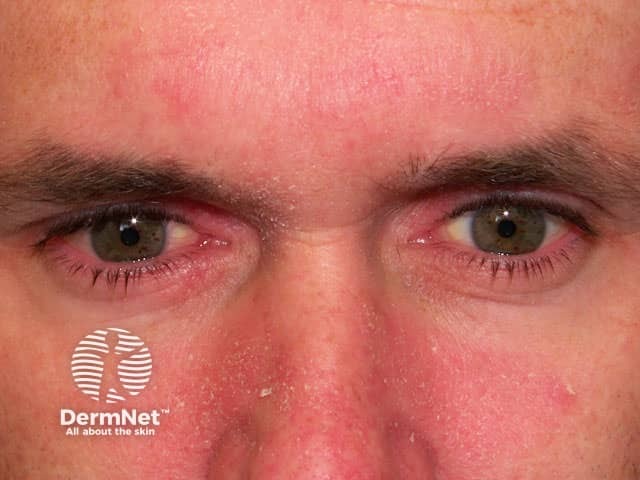
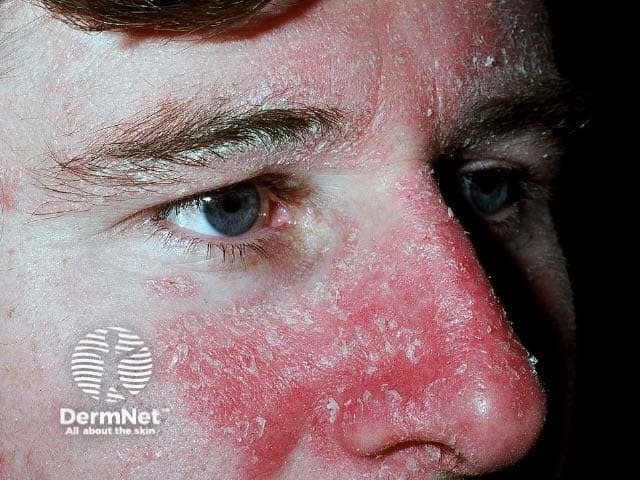

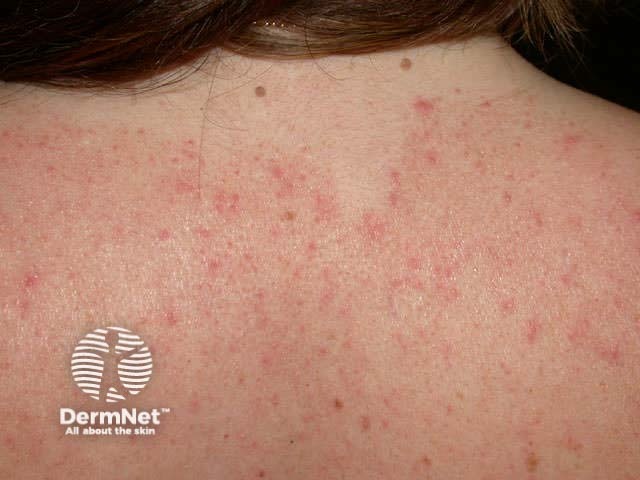
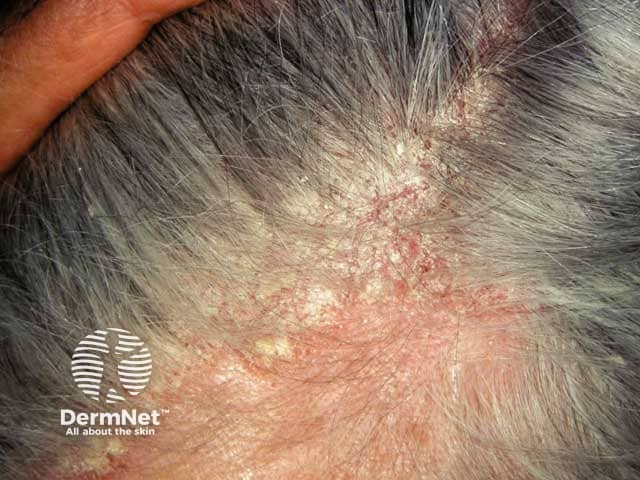
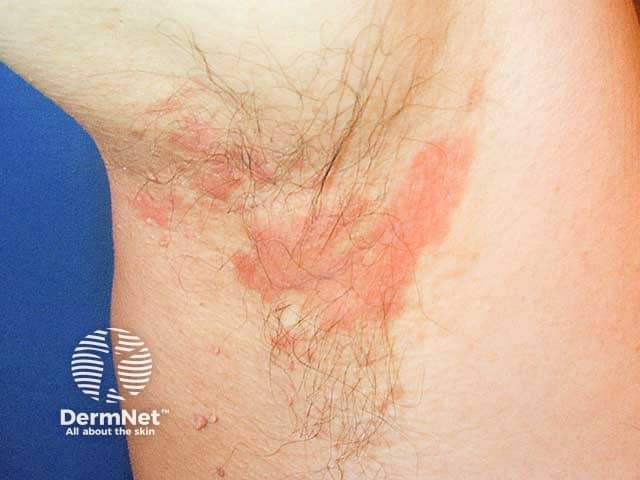
In most cases the diagnosis of seborrhoeic dermatitis is made clinically.
Seborrhoeic dermatitis may be confused with or may coexist with:
Management of cradle cap may consist of gently washing with a baby shampoo after a proprietary oil or lotion has been used to soften the scales (e.g. Egocappol, Egozite lotion). More troublesome seborrhoeic dermatitis affecting the scalp can be managed as in an adult:
Management of seborrhoeic dermatitis affecting non-hair bearing areas:
Describe the use of coal tar in the management of scalp problems.
Information for patients
See the DermNet bookstore